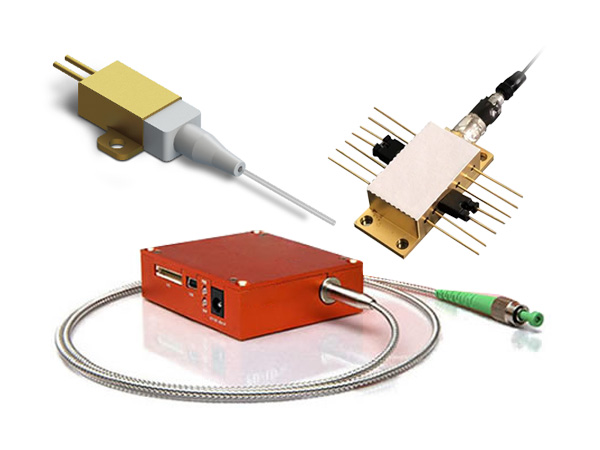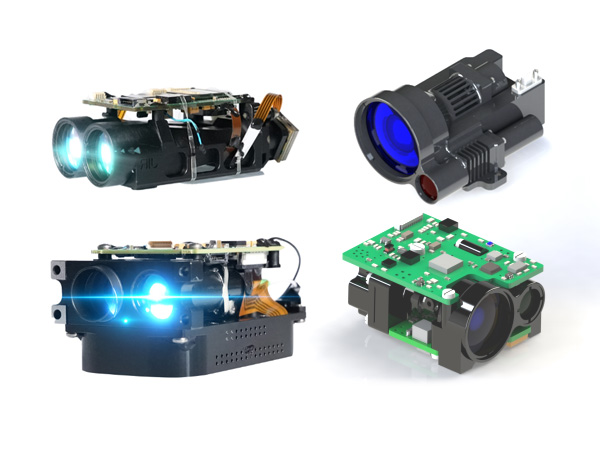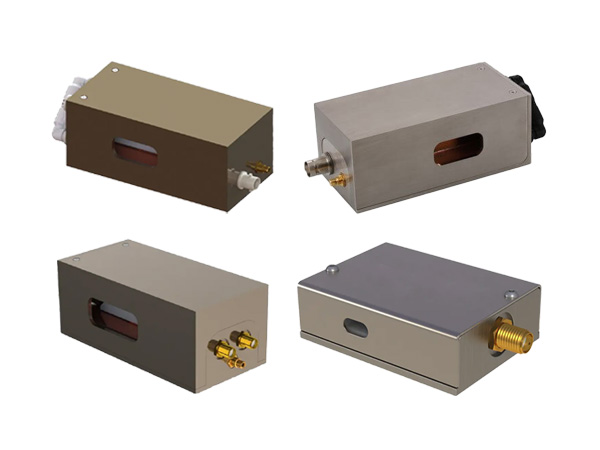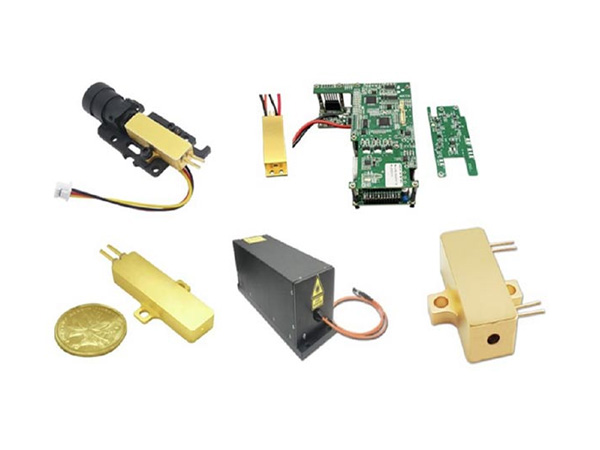C-Band Fiber Amplifiers: Comprehensive Technical Overview and Application Landscape
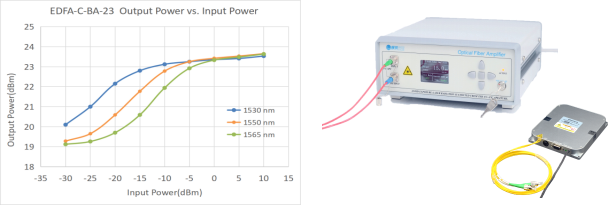
I. Technical Principles and Core Mechanisms
1.1 Physical Basis and Amplification Process
C-band fiber amplifiers use erbium-doped fiber (EDF) as the gain medium and achieve optical signal amplification based on the stimulated radiation effect of erbium ions (Er³⁺), which is specifically divided into three stages:
Pump Excitation: 980nm/1480nm pump light is injected to transition Er³⁺ from the ground state (⁴I₁₅/₂) to the excited state (⁴I₁₁/₂).
Population Inversion: The number of erbium ions in the metastable state (⁴I₁₃/₂) exceeds that in the ground state, forming the condition for amplification.
Signal Amplification: 1530~1565nm signal light triggers stimulated radiation, achieving exponential growth of optical power.
1.2 Key Technical Indicators
| Indicator | Typical Parameter Range | Technical Significance |
| Operating Wavelength | 1530~1565nm | Matches the minimum loss window of optical fiber (0.2dB/km) |
| Saturated Output Power | 17~26dBm (50mW~400mW) | Supports relay-free transmission over 80km+ |
| Noise Figure (NF ) | ≤4.5dB | Ensures signal-to-noise ratio (SNR≥18dB) for long-distance transmission |
| Gain Flatness | ≤±0.5dB | Adapts to balanced amplification of multi-wavelength signals in DWDM systems |
II. Product Classification and Technical Characteristics
2.1 Standard Functional Products
Booster Amplifier (BA): Output power up to 26dBm, used for transmitting-end power enhancement (e.g., 5G base station front-haul).
Preamplifier (PA): NF≤4.5dB, receiving sensitivity -45dBm, suitable for submarine cable relaying.
In-line Amplifier (LA): Gain 25~35dB, used for mid-link attenuation compensation.
2.2 Special Technical Models
| Type | Core Characteristics | Typical Application Scenarios |
| High-Power EDFA | Output power 40dBm (10W), Er-Yb co-doping technology | Lidar (detection range >200m) |
| Polarization-Maintaining (PM) EDFA | Polarization Extinction Ratio (PER)≥23dB | Fiber optic gyroscopes, seismic monitoring |
| Miniaturized Integrated Module | Size 50×50×15mm, power consumption ≤10W | 5G distributed base stations, IoT sensors |
2.3 Technological Evolution Forms
C+L Band Hybrid Amplification: Covers 1530~1605nm simultaneously, increasing single-fiber capacity by 40%.
Photonic Integrated EDFA: Based on silicon photonics platform, chip size ≤10mm², suitable for 800G optical modules.
III. In-Depth Analysis of Application Scenarios
3.1 Optical Communication Transmission Networks
3.1.1 Long-Distance Trunks
Submarine Cables: Deploy EDFA every 80km, combined with Raman amplification to achieve 1.2Tbps transoceanic transmission (e.g., FASTER cable).
Terrestrial DWDM: 40×100Gbps system with single-fiber capacity of 4Tbps, supporting backbone network expansion.
3.1.2 Data Center Interconnection
Extends transmission distance to 2km in 400G networks, reducing relay costs by 30%.
Dynamic gain adjustment adapts to burst traffic demands in cloud computing.
3.2 Optical Sensing and Special Fields
3.2.1 Distributed Sensing
Pipeline Monitoring: 1m positioning accuracy within 50km (Rayleigh scattering amplification).
Bridge Health Monitoring: Strain measurement accuracy up to 1με.
3.2.2 Quantum Communication
Low-noise PA (NF≤4.0dB) ensures thousand-kilometer-level quantum key distribution (e.g., "Mozi" satellite).
3.3 Laser and Nonlinear Optics
Fiber laser systems: As the power stage in MOPA architecture, increasing output power to 10W+ for material processing.
Microwave photonics: Amplifies RF signals to support 5G millimeter-wave base station front-haul.
IV. Technological Development Trends
4.1 Performance Upgrade Directions
High Power: Er-Yb co-doped fluoride fiber achieves 50dBm (100W) output.
Low Noise: Optimized pumping scheme reduces NF≤3.5dB, adapting to quantum communication.
Intelligence: AI algorithms dynamically adjust gain, with transient fluctuation ≤±0.1dB.
4.2 Integration and Energy-Saving Innovations
| Technical Route | Breakthrough Points | Application Value |
| Silicon Photonics Integrated EDFA | Single-chip realization of amplification + modulation | Next-generation 1.6T optical module |
| High-Efficiency Pumping Technology | Electro-optical conversion efficiency ≥65% | 1U rack power consumption ≤25W (PUE<1.3) |
| Space-Division Multiplexing Compatibility | Adapts to multi-core fiber (MCF) | 10Tbps-level ultra-trunks |
V. Industry Application Matrix
| Application Field | Core Requirements | Suitable Product Types | Key Technical Indicators |
| Long-Distance Communication | Low noise, long-distance relaying | PA-type EDFA | NF≤4.5dB, gain≥30dB |
| Data Centers | High-density integration, dynamic gain | Miniaturized BA modules | Size≤50mm³, ACC control |
| Fiber Sensing | Polarization maintenance, high sensitivity | PM-EDFA | PER≥23dB, PDG≤0.3dB |
| Lidar | High power, narrow linewidth | Er-Yb co-doped EDFA | Output power≥37dBm |
Conclusion
C-band fiber amplifiers construct an optical communication "power engine" through the quantum effect of energy level transitions, with their technological evolution always centered on "higher power, lower noise, and smarter control". With the advancement of next-generation technologies such as 6G and quantum communication, EDFA will deeply integrate with photonic integration and AI algorithms, becoming the core support for the optical transmission network to leap into the terabit era.
For more information on our EDFA, please click here.
 English
English Français
Français Deutsch
Deutsch euskara
euskara Русский язык
Русский язык Italiano
Italiano Português
Português Nederlands
Nederlands Polski
Polski Greek
Greek Lietuva
Lietuva Türkçe
Türkçe 日本語
日本語 한어
한어 中文
中文 தாமில்
தாமில் فارسی
فارسی हिंदी
हिंदी Tiếng Việt
Tiếng Việt ภาษาไทย
ภาษาไทย Pilipino
Pilipino Indonesia
Indonesia தாமில்
தாமில்
